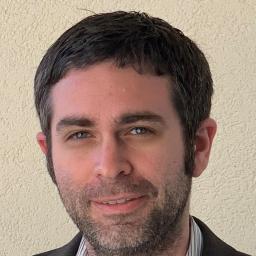Before I was a Jewish foundation professional, I was a farmer, and so it’s likely no surprise that one of my favorite holidays on the Jewish calendar (one of our four new years according to Mishnah Rosh Hashanah) is Tu B’shvat. On Tu B’shvat, a winter holiday for those of us in the Northern Hemisphere, we crack our digging trowels into hard earth, plant myriad seeds, cover them with compost, soil, and water, and with patience, faith, and skillful cultivation, help them to become trees, givers of oxygen, sustenance, and shelter. We might think about sowing seeds as having three distinct phases: preparing the ground, planting the seeds, and cultivating the ground as the sapling sprouts and grows. As I reflect on last month’s Prizmah Conference – my first – I am thinking about the parallels of these three phases to Jewish education.
Perhaps the most obvious parallel is the planting itself. Indeed, it is a metaphor we have all likely heard thousands of times. The sacred, important, and powerful work of educators – and all those who support education – is to plant in students’ minds, hearts, and spirits the seeds of knowledge in its many forms, from facts and figures to critical thinking to emotional intelligence and empathic ability. To be in the classroom teaching, collaborating, and learning with students is to engage in that essential act of seed sowing. And we might also say that the students themselves are the seeds of our community; imbued with knowledge fostered with patience and skill, they grow into the saplings and trees that will become sources of learning and wisdom for the generations that follow them.
However, as I revisit my learnings from the conference, I want to spend a little more time thinking about the other phases of planting and their parallels to Jewish education: what might it mean to prepare the ground for the seeds-as-knowledge? And how might we better cultivate the maturation of the seed-as-student? As a professional at a Jewish foundation whose focus is helping Jews and fellow travelers apply Jewish wisdom to their own lives and in pursuit of a better world, I think wrestling with these questions is vital to supporting the Jewish life that grows into a healthy forest providing oxygen, shelter, and sustenance to us and the greater world.
In conversations with lay leaders, heads of school, program directors, and teachers during the conference, I learned a great deal about the first phase: the preparation of the ground. I was reminded that even in a global community like ours, everything is local. For example, an area of interest to our foundation is Prizmah’s work helping schools to facilitate cultures of belonging, so that no student or family is ever made to feel out of place in a Jewish day school. I learned that this journey toward creating more equitable and diverse spaces in schools is highly individualized to each school; much like literal seeds planted in the earth, the ground varies widely from place to place. While this hyper-localism can feel frustrating at times to national funders thinking about scalable interventions, I find it both comforting and energizing to remember that our community grows and flourishes from the ground up, and with so many different grounds, our potential for diverse innovation has hundreds, if not thousands, of incubators in which to develop.
As to the tending and cultivating of the plant to allow the seed to reach its greatest potential, the conference’s opening night plenary presentation from futurists at the Stanford d. school was illuminating, especially in thinking more broadly about what we mean by potential. Typically, both when planting literal seeds and when educating, we hold in our minds a vision of what we want those seeds to become when they are grown: a mighty oak tree with thick branches and glossy leaves; a learned and empathic scholar with a distinct yiddishe kop. These images are often quite beautiful and can be powerful motivators, but as I learned from the futurists, they can also become stumbling blocks, obscuring the possible outcomes we haven’t imagined but which may be percolating deeply and invisibly in the roots and stems of our seeds and students. It is exciting to consider how we might nurture potential even when we can’t envision how it will bloom and fruit. If we frame our cultivating phase of sowing in those terms, we might consider the creative spirit (the conference theme) to be the core of the growing plant and focus our efforts on empowering that core.
One final thought concerning seeds: as last month’s conference was my first, I want to note how grateful I am to have been surrounded by so many creative and passionate Jewish thinkers, educators, and leaders. From the sheer amount of wisdom in plenaries, sessions, and hallway conversations, I felt the phases of sowing at work within me. I was reminded that even as adults, we can strive to be seeds and students, buzzing with wonder at the potential in our world, inspired to contribute what we can to the present and future.



